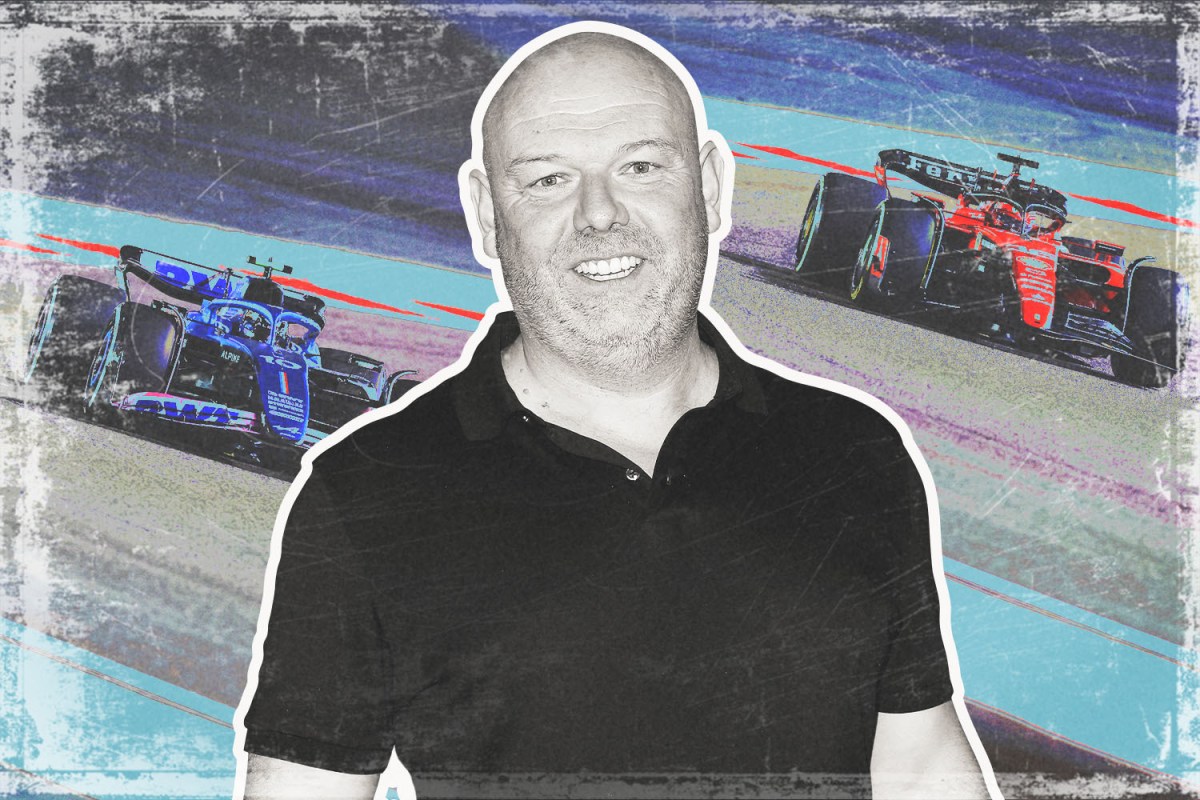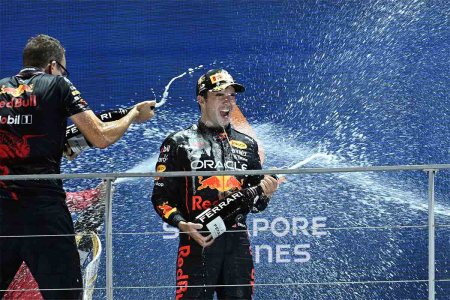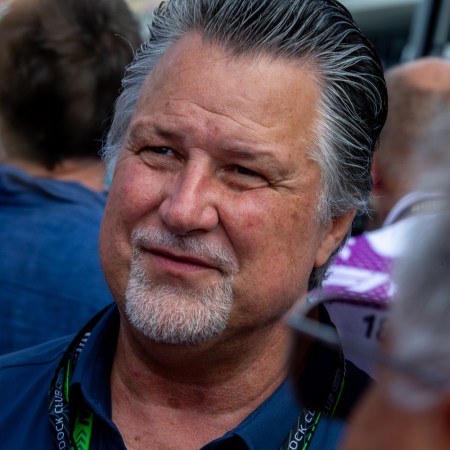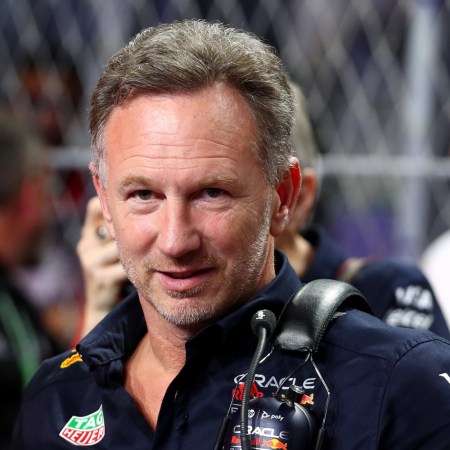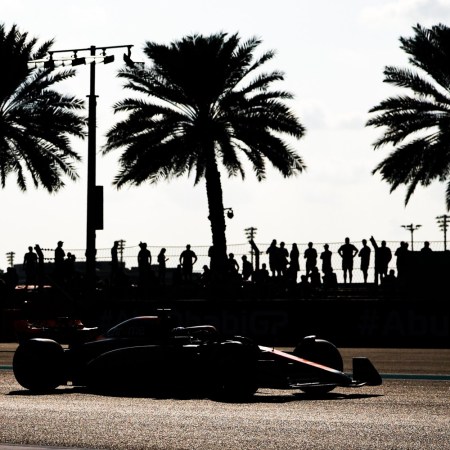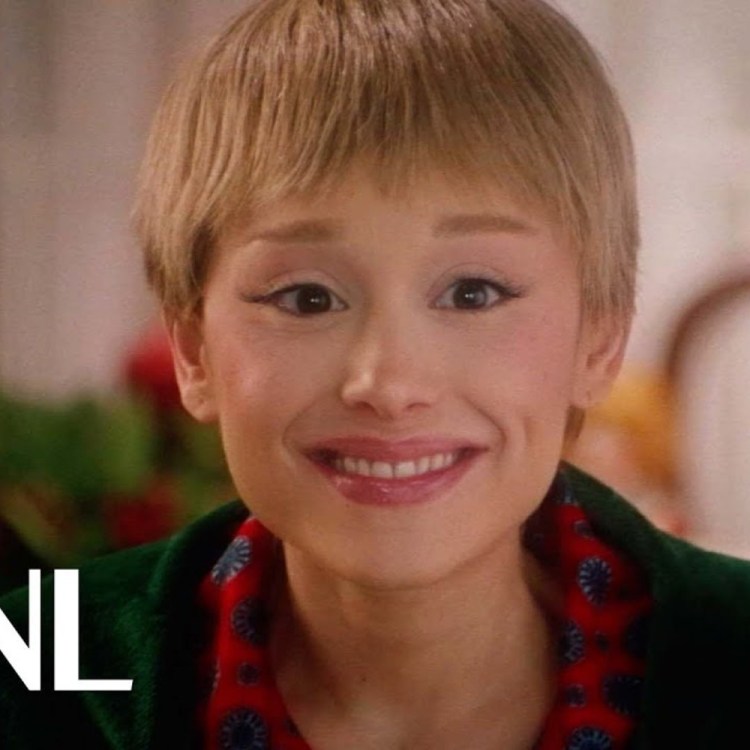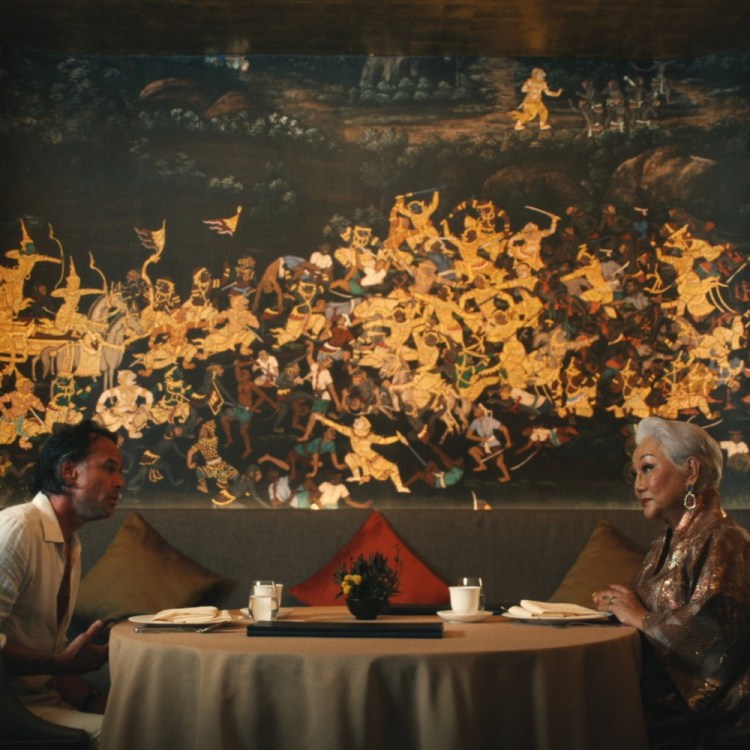With the start of the engines on another Formula 1 racing season, Drive to Survive roars back onto Netflix. The documentary series, which has played a critical role in expanding the popularity of the sport in the United States, just debuted its fifth season on the streaming platform. And as the 2023 season begins, Survive takes a look back at the year prior, which brought with it a significant shift in racing rules and regulations. It was a humbling season for otherwise stalwart winners Mercedes, who couldn’t quite figure out their car and thus slipped behind Ferrari and Red Bull, the latter of which ran away with the championship.
But there’s plenty of drama throughout Formula 1, which is the appeal of Drive to Survive. The fifth season spends a considerable amount of time focusing on the midfield rivalry between the Alpine and McLaren racing teams — a tension that’s exacerbated by McLaren ostensibly poaching reserve driver Oscar Piastri from Alpine. That’s to say nothing of the troubles Ferrari faced throughout the season, as they couldn’t get their ducks in a row despite having a winning car, or some internal driver squabbles at Red Bull. Throughout it all, the Drive to Survive cameras are there to capture what all unfolds. In fact, the format of the series is so popular that the team behind the series, Box to Box Films, is now producing similar documentary shows around tennis and golf for Netflix, respectively titled Point Break and Full Swing.
With the release of Season Five, InsideHook spoke with executive producer Paul Martin about how Drive to Survive structures a season, the return of Red Bull’s Max Verstappen to the series after a (very public) year away, capturing some of the year’s biggest moments, and more.
Inside Hook: When you’re looking at constructing a season, are there certain agenda items that you know you’ll want to hit right out of the gate? Or is it more free-flowing than that?
Paul Martin: It’s tricky. We’ve now spent five, six years in this world. We have an understanding of what’s going on, what those pinch points were, and how team dynamics work — all that kind of stuff. But it’s very difficult to sit down at the start of the season and properly nail those or write those kinds of episodes. You have an instinct that the audience is going to want to know what’s going on between Christian [Horner of Red Bull] and Toto [Wolff of Mercedes]. They’re gonna want to know what’s going on with Guenther [Steiner] at Haas. We know that there’s some favorite characters that we’ll want to service. Going into this year, the talk was that Ferrari were going to be really competitive. So we were really curious to see, with the pressure on Mattia [Binotto], the relationship between Carlos [Sainz] and Charles [Leclerc], how that kind of played out. We knew that [McLaren’s] Danny [Ricciardo] was likely going to be reaching a pinch point in McLaren, that was gonna go one way or another. There’s all things like that where you have a feel for how things could play out.
But the great thing about this world — and the great thing about this show — is that every year, it just throws up things that you could never foreseen happening. You see it in the series that when Seb [Vettel of Aston Martin] finally decides to call it a day, the set of dominoes that sets into effect is pretty extraordinary. I don’t think any of us would have perceived the ramifications of Seb’s retirement and what it did to the drivers market, [Oscar] Piastri, and ultimately Danny Ric.
What is the internal reaction when something like Piastri ostensibly falls into your lap? We’ve had silly seasons in F1 before, but this was unlike anything we’ve seen in quite a while.
We were fortunate with that. When something like that happens, you look at it, and you’re like, “Have we got the material to stand that up and make the audience feel like we’re on the inside of it?” I think we were incredibly lucky in we’d filmed a bit with Piastri, just because everyone was talking about this kid that was coming through, that had won every Formula that he’d been in. That’s pretty unique in the world. We kind of filmed with him early in the season cause we had a sense that he probably would be in the paddock the following year. I don’t think we anticipated it was going to be quite as dramatic as it was.
As we kind of sifted through the rushes, we realized that we had a pretty unique perspective on it. We’d spent a lot of time in and around Otmar [Szafnauer] and Zak [Brown] in that time period. As we looked through the material, we were pretty excited. We were like, “We can tell this story in a way that the audience is going to feel like they’re on the inside.” Which is what we always want to do with Drive to Survive; we want to bring to the fore things that happen in the season that people have no idea about. We want to bring a fresh perspective to anything that people feel that they know. I think you definitely get that with the whole drivers’ market. Like you said, we’ve seen that storyline in Drive to Survive before, but this is probably the silliest of a silly season.
How do you determine what stories necessitate an episode?
We always have to look at the series as a whole and the ebb and flow of that series. It comes down to, do we have the materials to stand things up. Then there’s been big things that have happened in previous seasons that we would have loved to brought a perspective to. But honestly, when we get into the edit, we don’t have the material. One of the criticisms I see sometimes online is about the things that we miss. We don’t have an infinite amount of cameras [laughs] and resources to be with every team, every single race. Everything we do is a decision; 75% of the time, you happen to be in the right place at the right time. But inevitably, there’s those things that the outside world thinks, “Oh, my God, there’s no way that’s not going to be in Drive to Survive.” We just didn’t have the coverage on it. We’d rather tell the stories that we can really add value to than try and tell stories that we just weren’t there for and can’t stand it up in the way that our viewers would expect to see it.
You got a simultaneous Season 5 and 6 renewal. Does that allow you to be more present in off-season events than you might not have been in past years?
We’ve had a really good offseason. It’s been really interesting to spend some time with the teams and the drivers in this period because we have stopped, waited, and hoped that we’re gonna get picked up for another season. We’ve been able to get out ahead of the season more. Our teams are there in Bahrain now, much more equipped. We have a lot of really good stuff already that we feel could play out over the year.
At Formula 1, Even That Sprayed Wine Has a Sponsor
Why Ferrari Trento pays handsomely to get its sparkling wine sprayed at the winner’s podiumHave you heard any reactions from the teams now that you’re involved a little earlier?
We’re part of the fabric of the sport now. I think they are used to having us around. A lot of them probably didn’t even really notice that we used to take Christmas off [laughs]. They’re used to us being around and talking to them throughout that period anyway. What would tend to happen in the offseason, even though we wouldn’t film, we’d still be talking to them on a regular basis, lining up to the possibility that there was going to be another season. They probably haven’t noticed that much difference.
Formula 1 is just such an amazing sport. Every year there’s just this excitement about what the possibilities are because there’s always this unknown. How good is each individual team’s car going to be? Is that driver really going to live up to that potential? As we go into it this year, there’s a lot of excitement around the package that Ferrari are gonna bring, the question marks over Mercedes, all the problems they had last year, the intelligence [they bring] — I think you probably saw it in testing today—we were hearing that Aston Martin have taken a massive leap forward this year.
When you do normal shows, you get [to] seasons five and six, and everyone loses a little bit of enthusiasm for it. Everybody feels a little bit tired of it. But this sport has a way of pulling you in. I feel as excited by the next season as I did when we were going into the first season of Drive to Survive because it’s the possibilities. You’re like, “Well, if this happened, and that happened, what’s really going to happen between Max and Checo, and Danny Ric,” and all that stuff. Not everything plays out in the way that you think it does, but there’s always so many possibilities going into a new season.
Are all those possibilities exciting for you guys as filmmakers?
Definitely, they all come with ready-made emotions, stakes, and rivalries. It’s all there. At every team, you have a team principal who’s under a huge amount of pressure to deliver. If it’s Zak Brown at McLaren, they’ve got to see an improvement this year. Then you’ve got the two drivers that collectively have pressure and stakes. Then you’ve got the individual drivers; their agenda may not be completely aligned with the team’s, at times. That’s fascinating. There’s no other sport that has so many different layers to it. For us as filmmakers and documentary makers, to constantly go into that world and explore those different dynamics between team owners, team principles, two drivers, the dynamics between the drivers, the dynamics between the driver and the team principal, team principle and owner, team principal and other team principles, drivers and other drivers—it’s pretty unique to the sport.
As we do more and more of these, we realized what a gift Formula 1 is. Not only have you got all these possibilities, but you’ve got them in a pretty contained space every weekend of the year for 23 weeks. That, as a filmmaker, is a gift. I know exactly where Christian Horner or Toto Wolff are gonna be on a Friday morning of a Grand Prix weekend. That means we don’t have to spend a lot of time chasing these guys around.
Speaking of drivers, did it take much convincing for Max Verstappen to come back and speak with all this year?
I think the whole “Max not being a part of it and then being a part of it,” for us, was nowhere near as dramatic as people made it sound. Max had been a part of the show for the first couple of years and then, for whatever reason, decided that he didn’t want to be a part of last season. As we got into season five, him and his management indicated they were receptive to it. We had a couple of chats with him in the paddock, and then he was back in.
I don’t think it was a huge deal for him; I don’t think it was huge for us. It’s that ebb and flow; some years, people feel like they’ve got something to say, and they want to double down on their participation. Other times, they’re like, “Oh, my God, I wish I hadn’t let you film me doing that last year because I’m sure I do that again this year.” That whole show is a constant kind of ebb and flow. Max’s participation in it, honestly, was part of the natural pattern of that show. In all my dealings with Max, he’s never been anything but super polite and respectful. There was never a big dust-up around [it]. That particular year, it wasn’t for him. This year, it worked for him. That’s the way it went.
There’s a heated exchange in a later episode between Toto and Christian where Christain makes a statement about Toto putting on a show for the cameras. What’s your perspective on that moment?
That was a very unique environment. I think that Christian, knowing Toto, and knowing how to needle Toto, was a well-placed jibe at Toto because Toto will always be adamant that he doesn’t change anything for the cameras. I think Christian tried to hit as low of a blow as he possibly could. That was extraordinary. We film a few team principal meetings across the course of a season, and we didn’t expect that one to turn out the way it did. We went in there, and suddenly, it just went nuclear.
It’s amazing how quickly this sport can turn. 12 months ago, none of those guys would have talked to Toto in the way that they did. But because he was on the backfoot and because his car wasn’t performing in the way they wanted it, suddenly had Guenther diving in on Toto. I love that scene. It shows what a brutal world it is, and they’re all out to get each other. They will snipe, and they will fight each other—not just on the track, but everywhere. That was such a great demonstration of how brutal that world is.
When all of this started, did you ever think you would get to this point?
When we were making it in Season One, we felt like we could see the potential. We could see this was a world that you could come back to year after year after year if there was enough going on, that it could still feel fresh. We had no idea that it was going to land in the way that it did and it was going to find this audience in the US and suddenly drive all this interest in Formula 1. I don’t think we expected it. I don’t think Netflix or Formula 1 expected it. It is amazing that it’s happened, and long may it continue, but I don’t think it was anyone’s master plan.
With all the experience that you’ve had on Drive to Survive, was it then easier to kind of take the loose structure of the series and bring it over to Full Swing and Point Break?
I think it made it easier because there was something that you could point to. In tennis and in golf, everyone understood, “Okay, here are the guys that made Drive to Survive. I’ve watched Drive to Survive. I get the tone of it and what this could be.” You have to be careful because all these sports are incredibly different. Tennis players are very different from golfers, very different from Formula 1 drivers. The geography of the sport — covering a Formula 1 event is actually reasonably self-contained. Trying to wrestle the tennis schedule or figure out a way to [talk to] four different golfers at a golf course over a weekend bring unique challenges that ultimately affect the storytelling as well.
Whenever we go into these worlds, Drive to Survive is the conversation starter. There’s a way for us to come into this world; it’s a way for you to get what we’re trying to do. It’s impossible to lift up and drop onto another sport, what you do on Formula 1. Whenever we make these shows, we make sure that we spend a little bit of time in, around, and going to some of the events and looking at where those pinch points are going to be where we can really do our storytelling. Those early trips where you go, don’t have cameras, and you’re talking to people and trying to get a feel of the world. That stuff is money in the bank on these shows because the worst thing you can do is go, “Hey, we’re the guys from Drive to Survive, we’re coming in here, we’re gonna do this and that.” It never panned out like that.
This article appeared in an InsideHook newsletter. Sign up for free to get more on travel, wellness, style, drinking, and culture.
